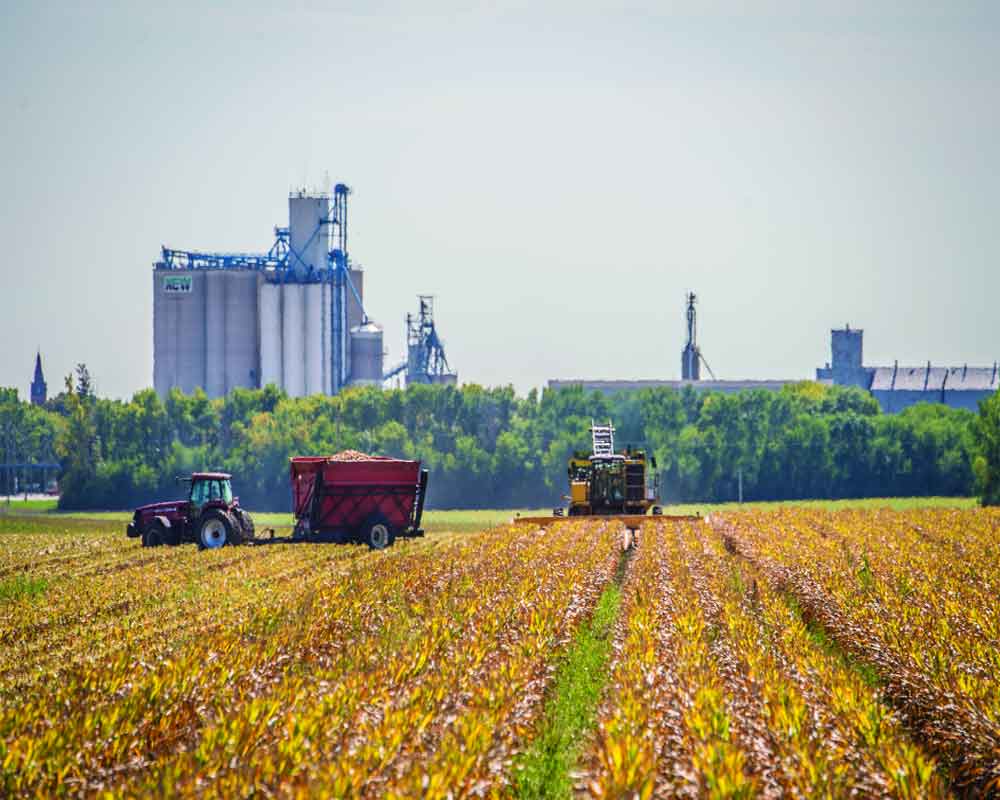The ceaseless march of urbanisation and industrialisation is swiftly altering the landscape, leaving behind a trail of unintended consequences
Land, the foundation of our existence, is often overlooked in the discourse on sustainable development. Yet, it is this very land that cradles life, harbours resources, and sustains us all. As we stride forward in our quest for progress, it is crucial to remember that every step we take leaves an imprint on the land beneath us.
As a developing nation, India’s relationship with land is complex and multifaceted. It is deeply intertwined with cultural, social, and environmental aspects, embodying the country’s rich heritage and biodiversity. However, it is also a highly coveted resource, often the subject of conflicts as various stakeholders, each with their unique vision of development, compete for its possession.
India’s terrain, once a vibrant mosaic of lush fields and flourishing ecosystems, is confronting a transformed paradigm. The ceaseless progression of urbanisation and industrialisation is swiftly altering the landscape, leaving a trail of unintended consequences in its wake. This shift is diverting fertile land away from its traditional agricultural use, posing serious challenges for food security and causing harm to eco-sensitive areas, thereby disrupting wildlife habitats and biodiversity on both micro and macro levels. Rivers, once brimming with life and vitality, are now enduring relentless assaults. Encroachments and diversions are strangling their ability to sustain us, while the toxic deluge of industrial waste is poisoning their essence. This contamination is turning these once vibrant waterways into barren stretches making it unfit for aquatic life, diminishing their aesthetic value and cultural significance and impeding their natural self-purification capabilities.
Mining, particularly in forested regions, is inflicting deep wounds on the earth, causing extensive land degradation and disturbing the fragile ecological balance. Meanwhile, rapid urbanisation, although promising improved living standards often lacks environmental sustainability in its construction processes. Development, despite its promise of progress, tends to exploit nature’s bounty and displace indigenous communities, severing the sacred ties that have bound them to the land for generations. These competing and conflicting land uses along with evolving land rights issues are igniting conflicts between local communities and administrative entities.
With India’s rise as the world’s most populous country, accounting for nearly 18% of the global population, the per capita land availability is dwindling. This decline, especially in areas vital for human life, agriculture, ecosystems, and natural resources, carries significant implications. The task ahead is to unlock the potential of the land in a way that harmoniously accommodates the diverse needs and impacts associated with different land uses.
The agricultural landscape of India has also experienced significant transformations over the centuries, evolving from traditional farming to modern techniques. Initially, Indian farming was subsistence-based, relying on indigenous knowledge and techniques like mixed cropping, crop rotation, and organic manure use, which fostered a healthy relationship with the environment. Agroforestry, the harmonious integration of trees and shrubs within farmlands had further enriched this tapestry which contributed to the overall health and productivity of the land.
However, the British era marked a shift towards commercial agriculture, focusing on cash crops and monoculture farming. This period also witnessed the introduction of land revenue systems, often marginalising small farmers and disrupting rural communities.
Post-independence, the Green Revolution emerged as a beacon of hope, aiming to alleviate hunger and poverty by increasing food grain production. While this revolution successfully doubled the output of staple crops like wheat and rice, it came at a cost. Overuse of chemical fertilisers and pesticides led to widespread soil degradation and water pollution. The dependence on water-intensive crops, aggravated water scarcity challenges, particularly in regions like Punja. Moreover, the focus on specific high-yield varieties overshadowed the importance of other vital food sources like varieties of rice and millet, threatening the diversity and resilience of India’s food security. While the Green Revolution brought prosperity to many, unfortunately, it also overlooked small and marginal farmers.
Traditional practices like shifting cultivation in some regions are contributing to deforestation and the conversion of agricultural land into less productive ones. This alteration of land use, particularly the conversion of forests for agriculture or industry, is further amplifying the effects of climate change. Rising temperatures, unpredictable rainfall patterns, and extreme weather events are disrupting agricultural production, posing immense challenges for farmers and making it difficult for them to predict yields and plan effectively. Climate change is also worsening the existing water scarcity, creating a vicious cycle that threatens the very foundation of agriculture in many regions.
Beyond these environmental challenges, socioeconomic changes like rapid urbanisation, labour migration, and evolving societal attitudes are also reshaping the agricultural landscape. Increasing fuel costs and a looming energy crisis further squeeze the profitability of farming, making it a less attractive livelihood for many. Farmers often face unfair market practices, including receiving low prices for their crops and delayed payments.
These multifaceted challenges culminate in a tragic reality - the distressing issue of farmer suicides. Driven by crippling debt, crop failures, and difficulties in securing a sustainable livelihood, many small and marginal farmers are pushed to the brink of despair. This sombre consequence casts a long shadow on the future of Indian agriculture, highlighting the urgent need for comprehensive and empathetic solutions that address not just the economic aspects but also the social and emotional well-being of the farmers who are the backbone of the nation’s food security.
While initiatives like the Rajiv Gandhi Kisan Nyay Yojana and PM-KISAN Yojana offer crucial financial support to the farmers, they fail to address the fundamental issue of farming being non-remunerative. A market-driven approach, guided by demand and supply, is often proposed and was reflected in the Centre’s response to the pandemic-induced economic crisis. However, the pandemic has also challenged previous notions about the agricultural economy and exposed vulnerabilities in supply chain-dependent food security.
Given the complexity and diversity of these challenges, it’s clear that a holistic and integrated approach is essential for sustainable land management. However, the current strategies are plagued by sector-specific focus, decentralised decision-making, outdated data, and unclear land records, often leading to conflicting land uses and unsustainable practices. We need to prioritise both economic growth and environmental sustainability while ensuring social equity.
The key to sustainable land management lies in open discussions and collective decision-making among a diverse group of stakeholders. To realise this vision, it’s essential to empower all stakeholders, with the necessary knowledge to make informed decisions. In this context, building a comprehensive Land Information System becomes vital, especially for small landholders. Farmers often face challenges in decision-making due to the lack of comprehensive land records, particularly during land transactions. Establishing systems that provide crucial data, such as soil conditions, water availability, past crop yields and pricing trends can enhance their decision-making capabilities. Addressing land rights issues and empowering marginalised communities are also crucial for societal robustness and equity. It’s equally important that land acquisition strategies balance the need for public projects with the provision of adequate compensation and rehabilitation support for displaced individuals.
Efficiency and effectiveness in land management can also be significantly improved by streamlining regulations, eliminating redundancies, and enhancing data accessibility and transparency. It’s also important to cultivate environmental consciousness, promote climate-smart strategies, and encourage forward-thinking in land use planning.
Protecting resource-rich areas, particularly Eco-Sensitive Zones must be prioritised. Establishing clear boundaries and integrating these areas into land use planning will ensure their continued bounty and ecological significance. Enforcing sensible restrictions on the acquisition and conversion of arable lands is fundamental, given their significant role in food security and sustaining agricultural communities.
With these comprehensive strategies and mindful practices in place, we can begin to address the multifaceted challenges of land management. This sets the stage for India to navigate its complex land use challenges and secure a future where development and environmental preservation flourish in harmony.
(The author is Former Principal Chief Conservator of Forests, UP, views are personal)


























